
A kipper is a whole herring, a small, oily fish, that has been split in a butterfly fashion from tail to head along the dorsal ridge, gutted, salted or pickled, and cold-smoked over smouldering wood chips.

Turmeric or Curcuma longa, is a flowering plant in the ginger family Zingiberaceae. It is a perennial, rhizomatous, herbaceous plant native to the Indian subcontinent and Southeast Asia that requires temperatures between 20 and 30 °C and high annual rainfall to thrive. Plants are gathered each year for their rhizomes, some for propagation in the following season and some for consumption.

Lac is the resinous secretion of a number of species of lac insects, of which the most commonly cultivated is Kerria lacca.

Food coloring, or color additive, is any dye, pigment, or substance that imparts color when it is added to food or drink. They can be supplied as liquids, powders, gels, or pastes. Food coloring is used in both commercial food production and domestic cooking. Food colorants are also used in a variety of non-food applications, including cosmetics, pharmaceuticals, home craft projects, and medical devices. Colorings may be natural or artificial/synthetic.
Photographic processing or photographic development is the chemical means by which photographic film or paper is treated after photographic exposure to produce a negative or positive image. Photographic processing transforms the latent image into a visible image, makes this permanent and renders it insensitive to light.
Carmine – also called cochineal, cochineal extract, crimson lake, or carmine lake – is a pigment of a bright-red color obtained from the aluminium complex derived from carminic acid. Specific code names for the pigment include natural red 4, C.I. 75470, or E120. Carmine is also a general term for a particularly deep-red color.

Hair coloring, or hair dyeing, is the practice of changing the color of the hair on humans' heads. The main reasons for this are cosmetic: to cover gray or white hair, to alter hair to create a specific look, to change a color to suit preference or to restore the original hair color after it has been discolored by hairdressing processes or sun bleaching.
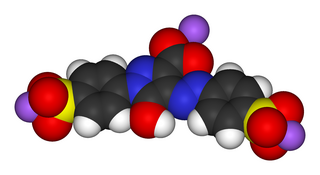
Tartrazine is a synthetic lemon yellow azo dye primarily used as a food coloring. It is also known as E number E102, C.I. 19140, FD&C Yellow 5, Yellow 5 Lake, Acid Yellow 23, Food Yellow 4, and trisodium 1-(4-sulfonatophenyl)-4-(4-sulfonatophenylazo)-5-pyrazolone-3-carboxylate.
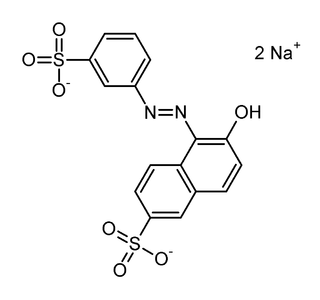
Orange GGN, also known as alpha-naphthol orange, is an azo dye formerly used as a food dye. It is the disodium salt of 1-(m-sulfophenylazo)-2-naphthol-6-sulfonic acid. In Europe, it was denoted by the E Number E111, but has been forbidden for use in foods since 1 January 1978. It has never been included in the food additives list of the Codex Alimentarius. As such, it is forbidden for food use in general, because toxicological data has shown it is harmful.

The dog whelk, dogwhelk, or Atlantic dogwinkle is a species of predatory sea snail, a carnivorous marine gastropod in the family Muricidae, the rock snails.

Crystal violet or gentian violet, also known as methyl violet 10B or hexamethyl pararosaniline chloride, is a triarylmethane dye used as a histological stain and in Gram's method of classifying bacteria. Crystal violet has antibacterial, antifungal, and anthelmintic (vermicide) properties and was formerly important as a topical antiseptic. The medical use of the dye has been largely superseded by more modern drugs, although it is still listed by the World Health Organization.
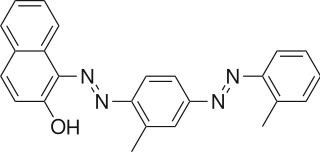
Sudan IV (C24H20N4O) is a lysochrome (fat-soluble dye) diazo dye used for the staining of lipids, triglycerides and lipoproteins on frozen paraffin sections. It has the appearance of reddish brown crystals with melting point 199 °C and maximum absorption at 520(357) nm.
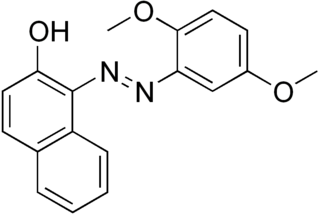
Citrus Red 2, Citrus Red No. 2, C.I. Solvent Red 80, or C.I. 12156 is an artificial dye. As a food dye, it has been permitted by the US Food and Drug Administration (FDA) since 1956 to color the skin of oranges. Citrus Red 2 is listed by the International Agency for Research on Cancer (IARC) as a group 2B carcinogen, a substance "possibly carcinogenic to humans".

Red 2G is a synthetic red azo dye. It is soluble in water and slightly soluble in glycerol. It usually comes as a disodium salt of 8-acetamido-1-hydroxy-2-phenylazonaphthalene-3,6 disulfonate.

Brilliant Black BN, Brilliant Black PN, Brilliant Black A, Black PN, Food Black 1, Naphthol Black, C.I. Food Black 1, or C.I. 28440, is a synthetic black diazo dye. It is soluble in water. It usually comes as tetrasodium salt. It has the appearance of solid, fine powder or granules. Calcium and potassium salts are allowed as well.
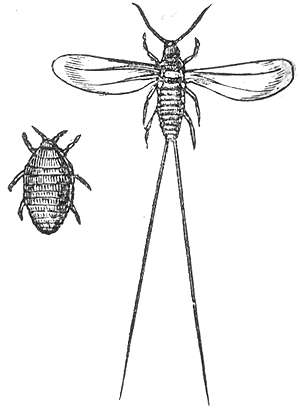
The cochineal is a scale insect in the suborder Sternorrhyncha, from which the natural dye carmine is derived. A primarily sessile parasite native to tropical and subtropical South America through North America, this insect lives on cacti in the genus Opuntia, feeding on plant moisture and nutrients. The insects are found on the pads of prickly pear cacti, collected by brushing them off the plants, and dried.
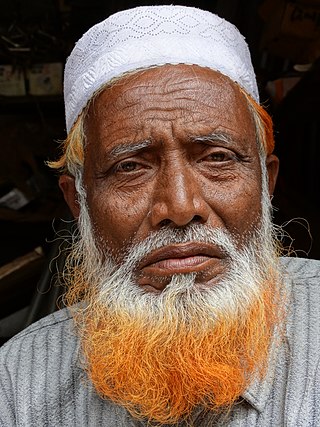
Henna is a black dye prepared from the dried and powdered leaves of the henna tree. It has been used since at least the ancient Egyptian period as a hair and body dye, notably the temporary body art of mehndi resulting from the staining of the skin using dyes from the henna plant. After henna stains reach their peak colour, they hold for a few days, then gradually wear off by way of exfoliation, typically within one to three weeks.
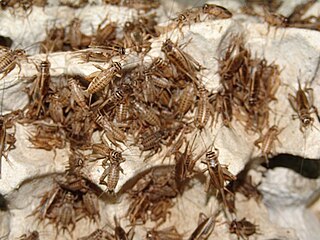
Insect farming is the practice of raising and breeding insects as livestock, also referred to as minilivestock or micro stock. Insects may be farmed for the commodities they produce, or for them themselves; to be used as food, as feed, as a dye, and otherwise.

Rubia tinctorum, the rose madder or common madder or dyer's madder, is a herbaceous perennial plant species belonging to the bedstraw and coffee family Rubiaceae.

Natural dyes are dyes or colorants derived from plants, invertebrates, or minerals. The majority of natural dyes are vegetable dyes from plant sources—roots, berries, bark, leaves, and wood—and other biological sources such as fungi.


















